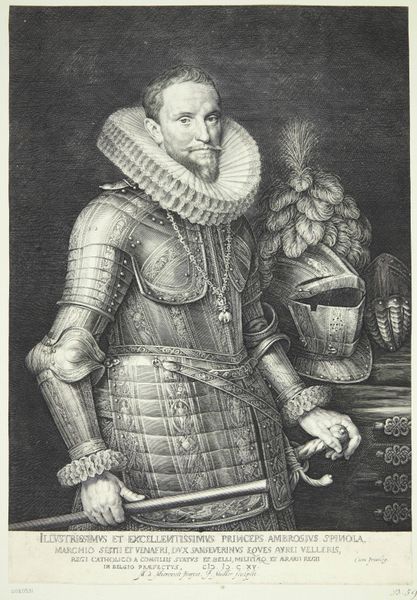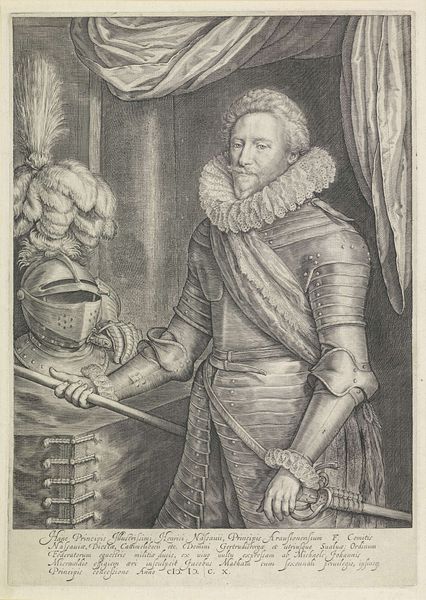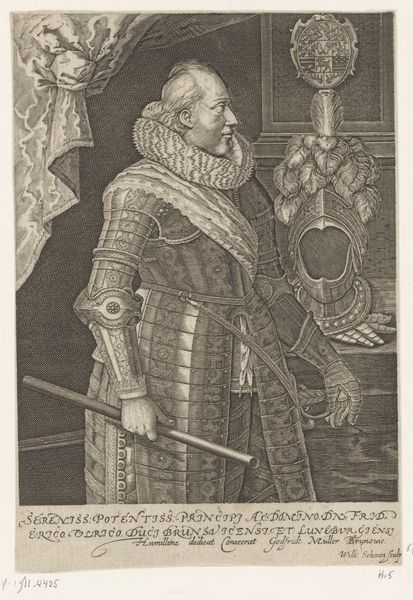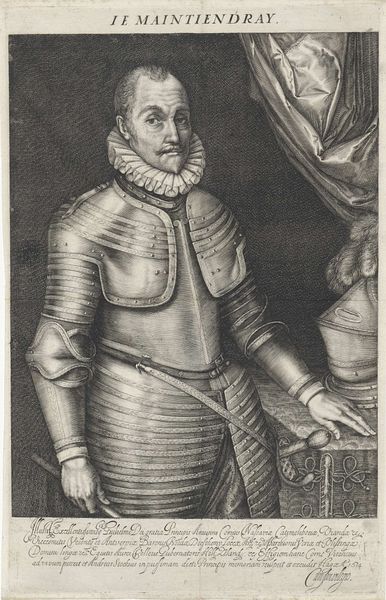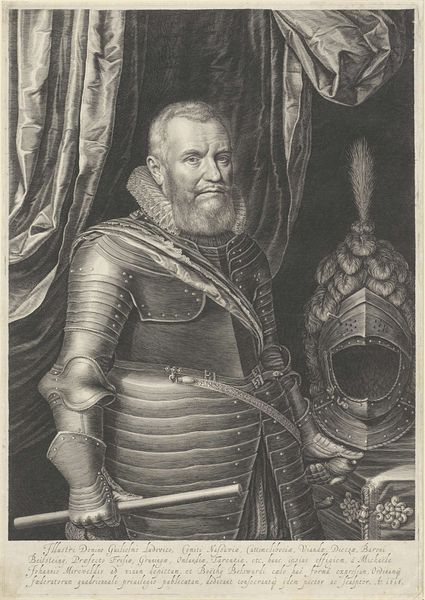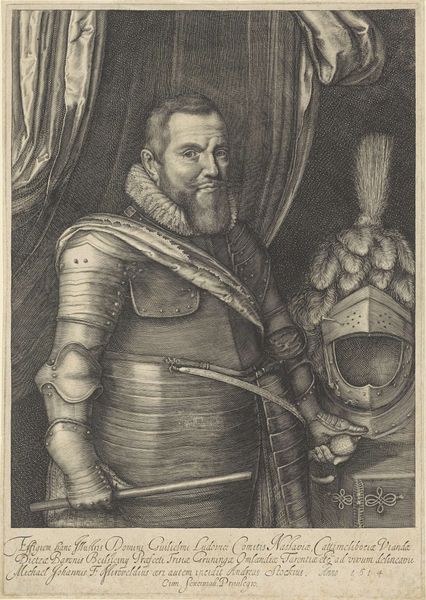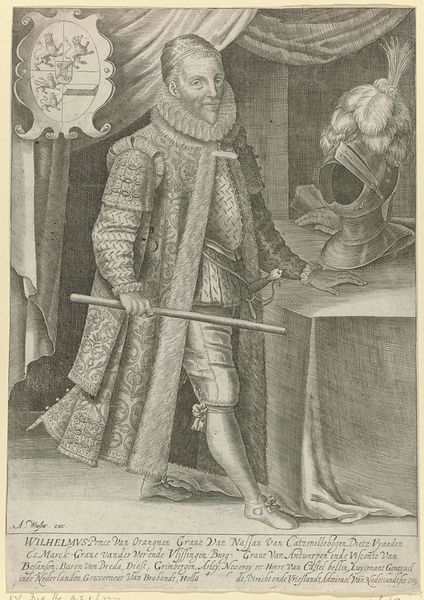
print, engraving
#
portrait
#
baroque
# print
#
portrait drawing
#
northern-renaissance
#
engraving
Dimensions: 420 mm (height) x 295 mm (width) (plademaal)
Editor: This is a rather striking engraving from 1608, "Portræt af Morits af Oranien" by Jan Harmensz. Muller. I'm fascinated by the incredible detail rendered in a simple print. What strikes me is the armor and the elaborate helmet...it's quite imposing. How do you interpret this work? Curator: Well, portraits like these often served multiple functions. Beyond mere representation, they’re steeped in symbolism and cultural memory. Look at the armor: what does it immediately suggest to you? Editor: Power, strength, protection… I suppose those are fairly obvious associations. Curator: Precisely. The armor and the helmet act as visible signs of his leadership. Notice, too, that he’s holding a baton, further signifying authority. Now, consider what is omitted; the artist included items alluding to conflict, not depicting war but leadership qualities. What psychological impact might this have on viewers of the time, or even now? Editor: I imagine it projects an image of steadfastness and control, reassuring people that their leader is capable and strong, especially during uncertain times. Curator: Exactly. The artist isn't simply creating an image, but solidifying a specific narrative about Prince Morits within the cultural memory. What starts off looking like 'just a portrait' reveals an engagement with public perception, memory, and enduring symbols of power. It speaks volumes about the period's understanding of leadership. Editor: I hadn't considered it that way before; now I realize the cultural weight behind even seemingly straightforward depictions. Curator: Indeed, it prompts us to contemplate which symbols persist and why they remain relevant through time.
Comments
No comments
Be the first to comment and join the conversation on the ultimate creative platform.
